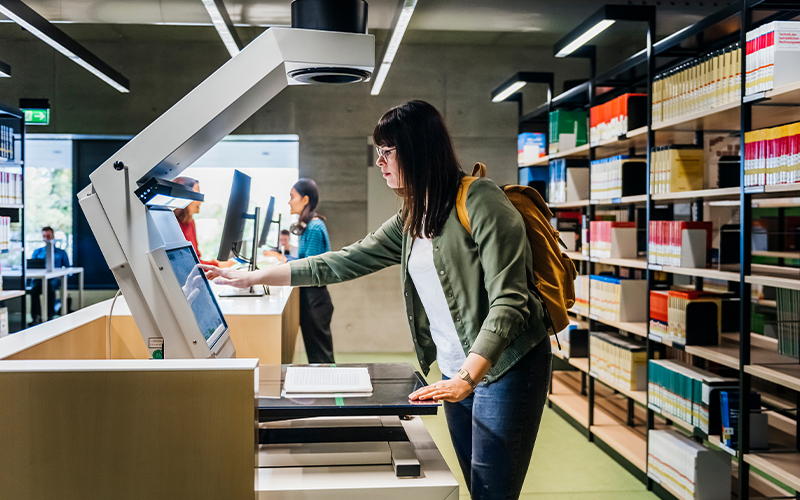The 21st century has brought with it various technological innovations to revolutionise just about every aspect of our day-to-day life. The widespread use of modern digital technology has changed the way we communicate, work, make plans, share information, travel, impart knowledge, and learn. While leading businesses across industries are already enjoying the benefits of modernising and digitising their processes, the education sector is only just embracing digitisation*. This process accelerated during the pandemic, with schools shut down and students unable to leave home. Educators today are open to the idea of using modern methods. With more and more educational institutions adopting the latest technologies to better facilitate learning, it’s time we explore contemporary digital education techniques and discover how students can benefit from a digital education ecosystem.
Modes of education
Digital education today can be classified into three categories. These are online learning, blended learning, and distributed learning. Let’s take a closer look at each of these digital learning techniques.
Online learning
Online learning is the first thing that comes to mind when discussing digital learning in the education system. This is when teachers and students use the internet to communicate. Hence, learning can progress without the need to be together at the same location. Over the last few years, online learning has given millions of kids in rural and inaccessible regions access to contemporary education. It has helped students learn at their own pace and convenience.
Blended learning
Also known as hybrid learning, blended learning combines traditional physical learning methods with contemporary online learning techniques. An example of this type of digital education is when teachers use digital platforms to disseminate learning materials designed to supplement lessons learnt during physical classes. This allows students to engage in online discussions about what they have learnt with their teachers and peers.
Distributed learning
Distributed learning amalgamates online and blended learning, focusing on the online aspect of blended learning or distance education. Distributed learning relies heavily on modern technologies and tools to cover the most important aspects of the syllabus.
Benefits of digital education
Enabling remote learning for students who can’t make it to school or those in remote regions, implementing modern digital technologies to the education system brings several benefits. We have detailed a few ways students can benefit from establishing a digital education ecosystem.
Better student engagement
The incorporation of digital learning in schools, colleges, and universities over the last few years has proven to boost student engagement. Leveraging modern technology to learn and study can be much more engaging and rewarding for today’s generation than using pens, notebooks, and a pile of textbooks.
Developing life skills
Digitising the education sector involves using various modern technologies, including mobile devices, presentation software, video conferencing tools, and more. In these digital times, familiarity with using these devices and technologies are necessary skills that students will continue to use in the course of their personal and professional lives.
The encouragement of collaboration and group work
The digital education ecosystem encourages collaborative learning, where a group of students can cooperate online and learn from each other. Not only does this teach kids how to make friends and work together, but learning with a group also builds competitive spirit and encourages students to excel.
Flexibility
Modern learning tools allow students a lot more flexibility than traditional classroom lectures. Students from unique backgrounds and needs can access online learning with edutech platforms, creating an environment of equity and accessibility in education. Students need not be bound by rigid schedules and can complete the curriculum at their own pace. This flexibility and convenience help students get the most from their education.
Keeps learning interesting
Innovations in digital education are designed to keep the learning experience entertaining and interesting. An example of this is gamification, where game-based elements and principles are incorporated into the learning process. These kinds of strategies make learning fun, boost interest, participation, and performance, and use a reward system to keep students invested.
*For organisations on the digital transformation journey, agility is key in responding to a rapidly changing technology and business landscape. Now more than ever, it is crucial to deliver and exceed organisational expectations with a robust digital mindset backed by innovation. Enabling businesses to sense, learn, respond, and evolve like living organisms will be imperative for business excellence. A comprehensive yet modular suite of services is doing precisely that. Equipping organisations with intuitive decision-making automatically at scale, actionable insights based on real-time solutions, anytime/anywhere experience, and in-depth data visibility across functions leading to hyper-productivity, Live Enterprise is building connected organisations that are innovating collaboratively for the future.
how can Infosys BPM help?
The Edutech platform solutions suite from Infosys BPM integrates contemporary learning methods with modern technology. Realising the importance and benefits of technology in education and assessment, Infosys BPM has equipped itself to guide educational institutions into the digital age.







